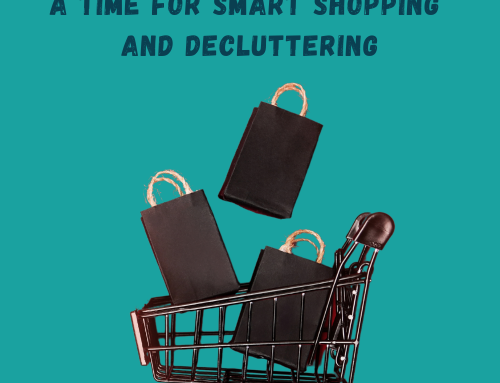Sorting the KonMari Way
by Jeannine Bryant
In her book The Life-Changing Magic of Tidying Up: The Japanese Art of Decluttering and Organizing, Marie Kondo gives many valuable tips for tidying up your home and getting rid of the excess “stuff” that tends to accumulate. One of the simplest and most helpful tips, I believe, is this: sort by category, not by room.
This applies to every kind of possession you have in your home: towels, sheets, shoes, pants, sweaters, screwdrivers, cleaning supplies, spatulas, magazines, electronics, toys. If you have these items spread out into various rooms in your home, it is easy to collect more than is really necessary, and can also make things difficult to find when you really need them.
Let’s start with clothing as an example. If some of your pants are stored in your closet, some in dresser drawers, some in plastic totes underneath the bed, and some in the basement cedar closet, there are a few problems: (1) It can be difficult to locate the particular pair of pants you want to wear, and (2) It can be easy to accumulate many more pants than is reasonable and necessary for you to own. So, gather all your pants together in one place. Now, make a pile of all the jeans, all the black pants, all the brown pants, all the khakis, and so forth. You can now more easily see just how many pairs of pants you have, and make decisions more easily about how many you should keep. Ask yourself – what is the reasonable number of jeans I should keep? For me, that number is 7-10 (I wear jeans most days, and like to have a variety). Next, ask yourself how many pairs of black pants do you need? For me, 1-2 pairs is sufficient (I don’t wear them that often). Work your way through each category, taking stock of what you currently own, then making an assessment of the number that is reasonable for you to keep.
This idea of “reasonable” is of course subjective, and that’s okay! It’s your house and your stuff, so you get to decide! We find that some of our clients like to keep a sparse home with lots of extra room in drawers and cupboards and closets, while other clients like to have a bit more of their belongings surrounding them. Sometimes the amount you consider to be “reasonable” has to do with how much you use a particular kind of item (black pants, for example). Other times it might have more to do with the amount of space you have to store such items. For example, the number of bookshelves you own should probably determine the number of books you can keep (only as many as can fit on the shelves). Likewise, the number of tools you own might be determined by how many you have room for in your workshop or garage. For me, I limit the number of shoes I own to the number that will fit on the two shoe racks I have in my closet. When they are full, it’s time to stop buying or start donating (I usually opt for donating, so I can continue to buy! Ha!) We can all dream of living in a mansion someday with unlimited storage space, but until then, let’s live in our own realities and make the best of the current living situation we are in.
Towels and sheets are one area where multiple sets tend to accumulate if they are not stored in one place. Work through the same exercise with these items – bring all the towels and all the sheets from your entire home together in one area. Then make piles – all the bath towels in one pile, handtowels in another, wash cloths in another. Now, ask yourself – how many people live in the home, and how many towels do they go through in a typical week? This will tell you how many towels are reasonable to keep. The same with sheets – I think two sets of sheets per bed in the house is plenty. Let go of the rest. Local animal shelters will gladly take donations of both these items and put them to good use. As a reward, you will have extra room in your linen closet and the knowledge that you helped out some organizations in your community.






